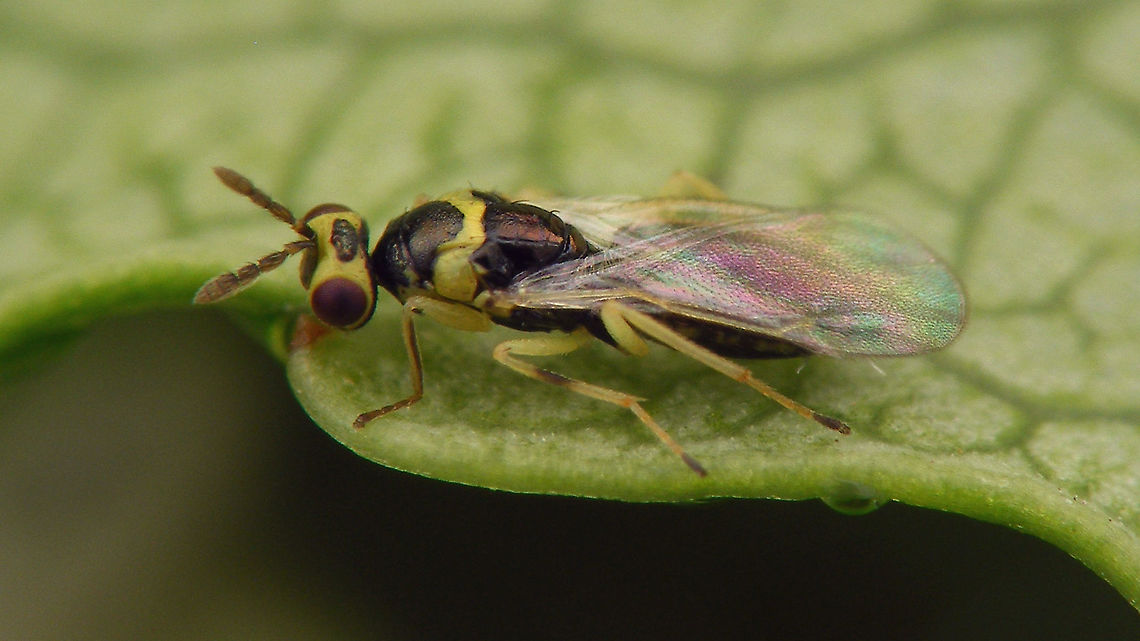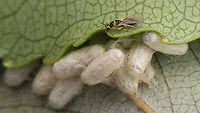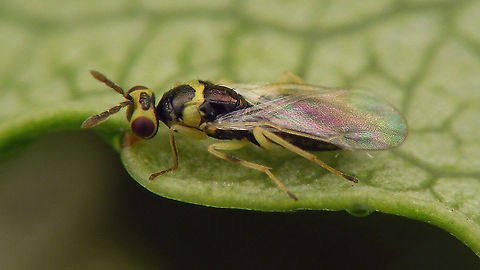 PromotedSpecies introCountry intro
PromotedSpecies introCountry intro
Cirrospilus pictus
Hyperparasite on the cocoons of some Braconidae found on Willow
Tentative ID by self (see: https://waarneming.nl/observation/123744746/ )
On the cocoons it developed in:


Cirrospilus pictus is a Chalcid wasp (Chalcidoidea) in the family Eulophidae, that is normally a parasitoid on the larvae of leafmining Lepidoptera, weevil and sawfly mines, but occasionally also a hyperparasite on the cocoons of Braconid wasps, such as Apanteles spp.
Similar species: Wasps, Bees, Sawflies And Ants
By Pudding4brains
Public Domain
Uploaded Jun 15, 2020. Captured in E232, 7924 Veeningen, Netherlands.

comments (5)
Usually both are parasitoids (parasites that in the end cause the death of their host).
Example: A Braconid wasp lays it eggs on/in a caterpillar. The larvae of the Braconid wasp eat the caterpillar from the inside, at first while the caterpillar is still alive and keeps feeding, until the caterpillar dies and all soft tissue is consumed (usually the skin remains). Now the mature larvae of the Braconid wasp leave the caterpillar and produce cocoons outside of the caterpillar to pupate and form new wasps. Such cocoons can be seen in one of the images.
In the mean time a different parasite/parasitoid has injected its eggs into one of the larvae or pupae of the Braconid wasps that originally parasited the caterpillar. So now in turn, the larvae of the parasitic Braconid wasp are eaten to serve as food for the new parasite, which is hence called a "hyperparasite" (a parasite on the parasite of the caterpillar). The wasp depicted above can either be a regular parasitoid, directly attacking the larvae of Moth, Beetles, Flies etc. (usually leafminers, hence very small larvae), or optionally a hyperparasitoid on the larvae of a Braconid wasp that has attacked a larger larva. Posted 5 years ago, modified 5 years ago
My friend is very happy with the answer, and so am I. Thanks! Posted 5 years ago